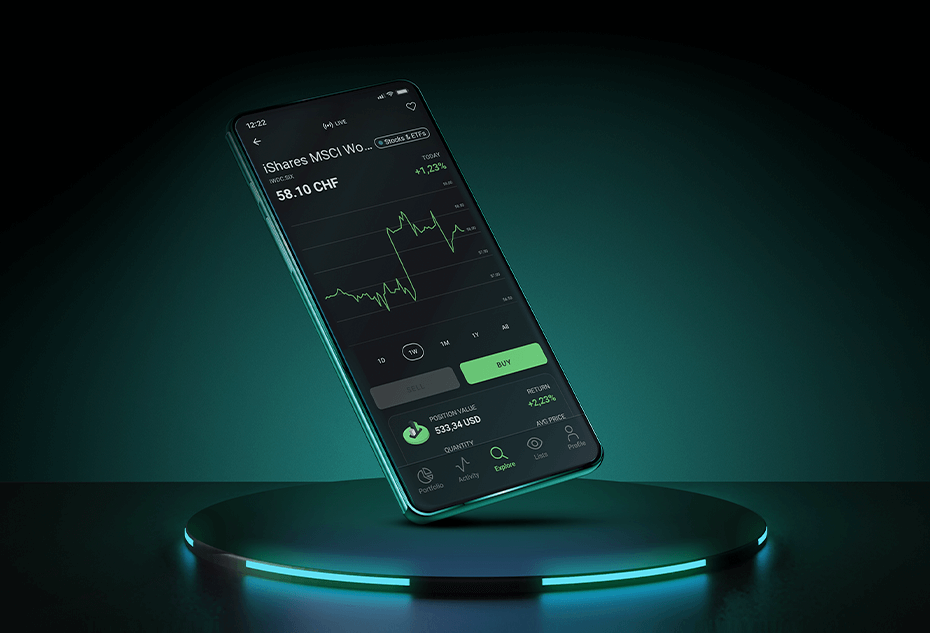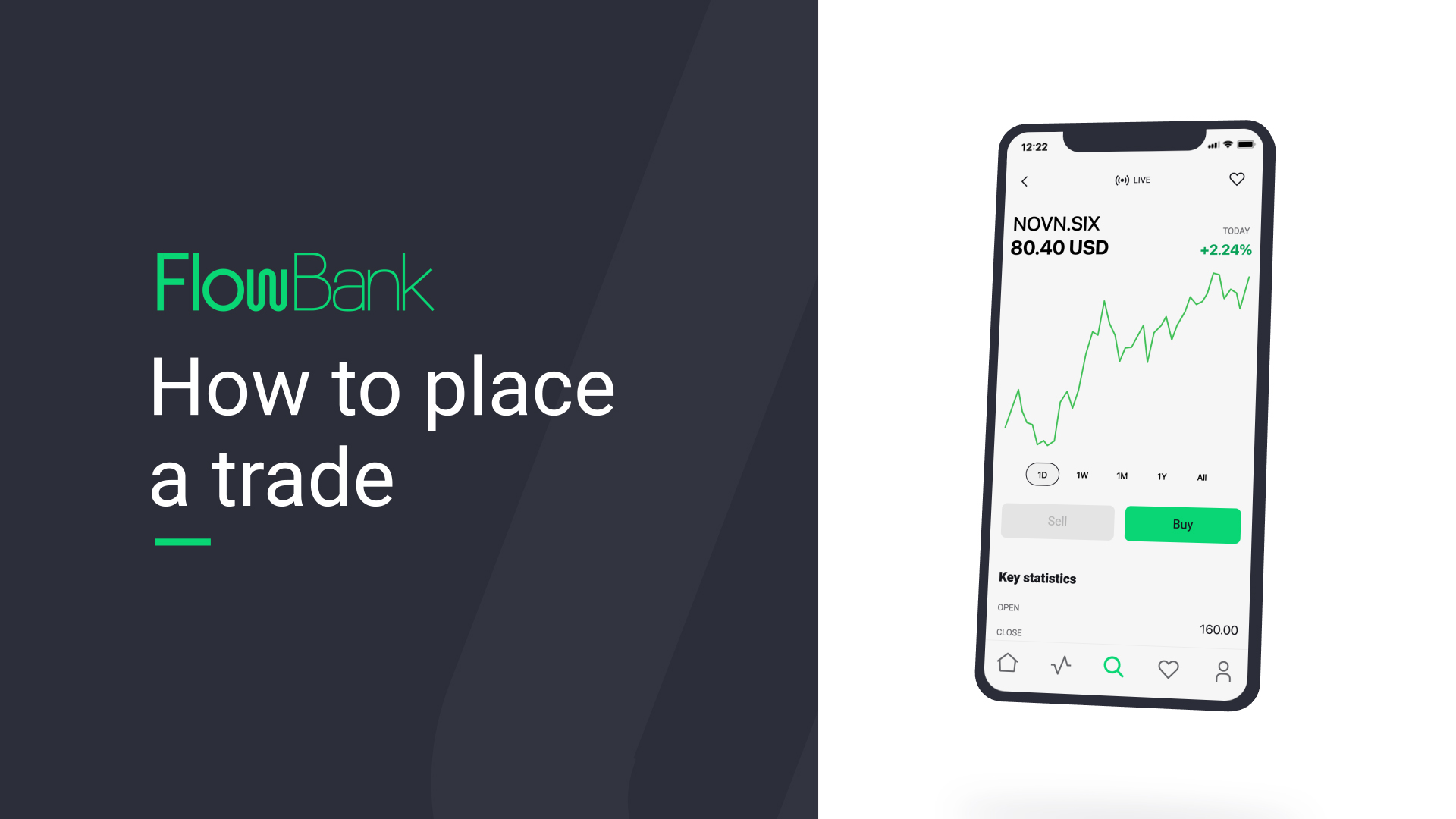What is an ETF ?
An ETF, or exchange-traded fund, is a type of investment fund that is traded on stock exchanges, much like stocks.
ETFs are a popular choice for investors because they offer the potential for high returns and the ability to trade throughout the day. ETFs are also one of the most flexible investment products available, as they can be used to track a wide variety of markets and asset classes, including stocks, bonds, commodities, and even currencies.
What are the Different Types of ETFs ?
There are three main types of ETFs available for trading via a broker: equity ETFs, fixed-income ETFs, and commodity ETFs. A trading account with Flowbank offers all three. Equity ETFs invest in stocks and can be further divided into subcategories such as large cap, small cap, and international. There is a multitude of ETF options across different markets. Fixed-income ETFs invest in bonds and can offer stability and income. Commodity ETFs invest in raw materials such as gold, oil, and agriculture.
How do you trade ETFs?
To trade an ETF, you first need to find a broker that offers ETF accounts. Once you have found a broker, you must open a trading account and deposit money into that account. Make sure to check the deposit minimum, if there is one. Once your account is funded, you can begin trading ETFs in the account.
To trade an ETF, you will need to place an order with your broker through your account’s trading platform. Sometimes there will be a minimum order size. There are two trading order types that you can place: a market order or a limit order. With a market order, you will buy or sell the ETF at the current market price. With a limit order, you will set a price at which you are willing to trade the ETF.
Once you have placed your order, your broker will execute the trade and you will own the ETF that you purchased via your account. You can then hold onto the ETF in the account for as long as you want or you can sell it at any time the stock market it is listed on is open.
What's the difference between an ETF and stock ?
An exchange-traded fund (ETF) is a type of investment fund that is traded on an exchange. Investment funds invest in multiple financial instruments, including stocks. The most popular ETFs are tied to a specific index, such as the S&P 500, which is an index of the stock prices of the largest 500 companies in America.
Stocks, on the other hand, are individual securities that are also traded on stock exchanges. While ETFs offer diversification and exposure to a variety of assets, stocks relate to just one specific company. You can choose a stock brokerage or ETF brokers for investing. FlowBank offers both stocks and ETFs all in one account.
Both stocks and ETFs are useful tools to achieve your investing goals.
How do I buy an ETF online ?
To buy an ETF online, you'll need to open an account with an online broker that offers ETFs to trade online. Once you've opened an online account, you can view the ETF you want to buy and place an order in the account.
When buying ETFs, you'll need to pay attention to the bid-ask spreads of the ETFs in your broker account. The spread is the difference between the price at which you can buy the ETF and the price at which you can sell it. You'll also need to pay a commission to your broker.
What to consider when choosing an ETF trading platform ?
First, you need to make sure that the platform is offered by your best brokers. Second, you need to make sure that your platform offers the best features and tools that you need. Different brokers make different features available on their platforms, either for free or as paid extras.
Third, you need to make sure that the platform is easy to use and navigate. Fourth you should make sure the ETFs you are interested in are available on the account that uses your preferred trading platform. Lastly, you need to make sure that the platform is affordable.
How to invest in ETF ?
The first step is to understand whether Exchange Traded Funds can help you achieve your investing goals. ETFs are a type of investment vehicle that allows you to invest in a basket of assets in a single transaction. This can be helpful in diversifying your portfolio and reducing risk.
ETFs are traded on stock exchanges and so day trading is possible too, like with stocks and options. ETFs typically have lower fees for investors than traditional mutual funds. You will usually pay a commission to your broker to trade ETFs. FlowBank offers commission-free trading in Swiss index ETFs. It's important to do your research and take your own view on what’s suitable to find the right ETFs for trading or investing. There are many different ETFs and ETF brokers available, so be sure to choose the ETFs and a brokerage that aligns with your investment goals.
Are ETFs a good investment ?
There are many factors to consider when making any investment decision. Exchange-traded funds (ETFs) can offer some advantages over other types of investments, such as traditional mutual funds. ETFs are generally more tax-efficient and have lower expenses and commissions than mutual funds, which can make them a good choice for long-term investors. Additionally, ETFs can provide greater flexibility and control when it comes to portfolio management. An alternative to ETFs is CFDs offered by some brokers.
Ultimately, whether or not ETFs are a good investment for you will depend on your individual financial goals and objectives.
How to pick the right ETF for you ?
First, learn what is your investment goal. Are you interested in short-term trading, looking to grow your money over time, or are you more interested in generating income? Second, what is your risk tolerance? Are you willing to accept more volatility in your portfolio in exchange for potentially higher trading returns, or do you prefer steadier investing with fewer ups and downs? If you are planning to actively trade, commissions are a greater consideration.
Once you have a clear idea of your investment goals and risk tolerance, you can start to narrow down the universe of ETFs to find the right one for you. For example, if you're looking for long-term growth, you might want to consider an ETF that tracks a broad index like the S&P 500. On the other hand, if you're more focused on income, you might want to look at an ETF that invests in high-yield bonds or in dividend-paying stocks.
In general, it’s best to take the time to learn what you want from your investment and how much risk you're willing to take on, then you will be in a much better position to pick the right ETF for you.
What is expense ratio in ETF ?
An expense ratio is a measure of the fees charged by an ETF.
It includes both the management fee charged by the ETF provider and other costs incurred in running the ETF, such as trading costs and custody fees. The expense ratio is these fees and costs expressed as a percentage of the ETF's average assets under management. The best expense ratios are the lowest ones!
For example, if an ETF has an average AUM of $1 billion and the total costs associated with running the ETF are $5 million, then the expense ratio would be 0.5%. The expense ratio is separate from commissions at brokers. The expense ratio is an important consideration for investors when choosing an ETF, as it can have a significant impact on the overall performance of the ETF.












